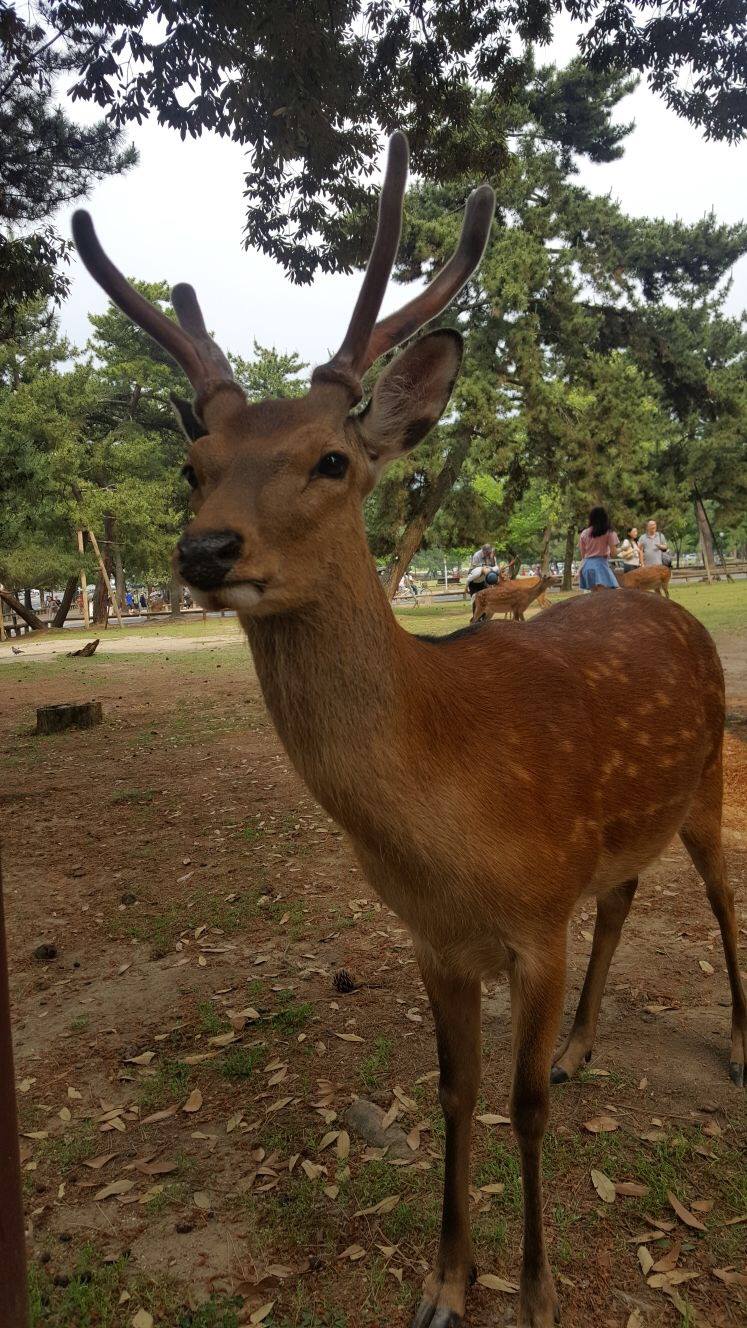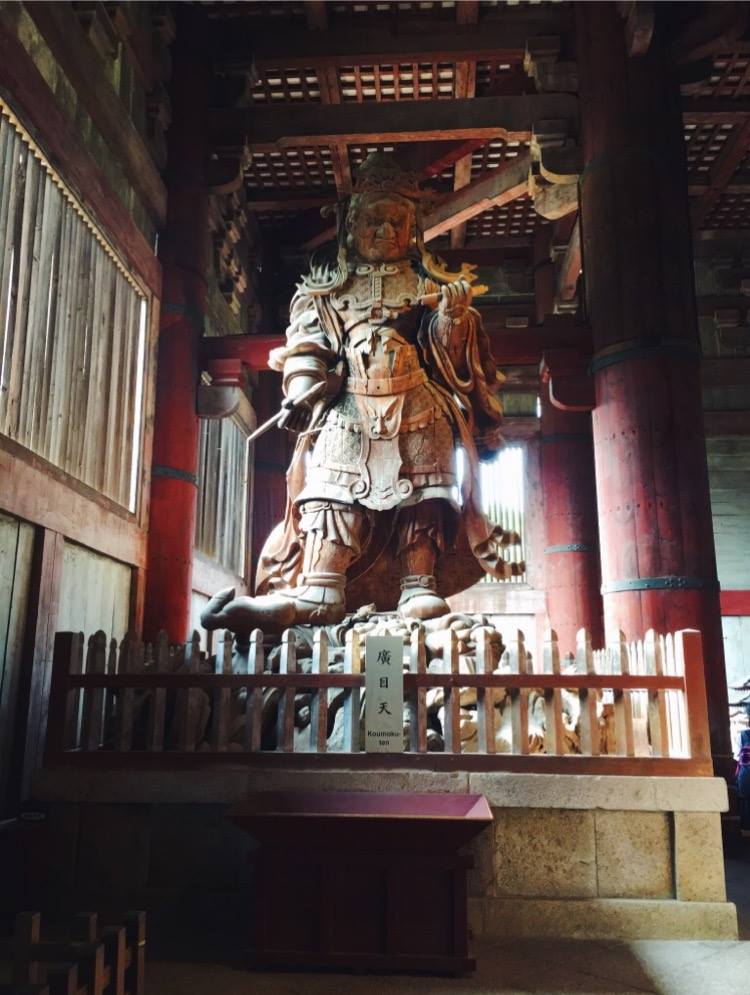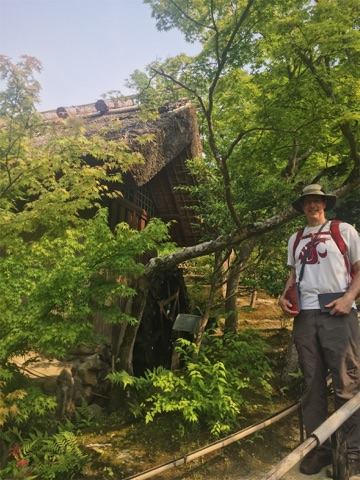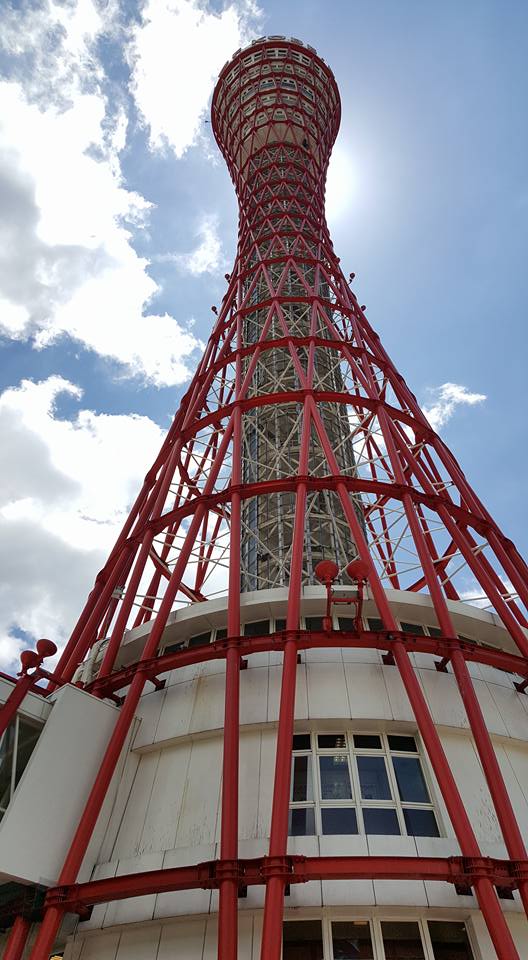A positive equation
Margarita Magaña overcame her math problems, which in turn helped her overcome much greater.
By C. Brandon Chapman
June 22, 2018
When it came to math classes growing up, Margarita Magaña totally sucked. And now she’s a math teacher.
That’s irony enough. But the story doesn’t actually end there.
It’s probably her early math struggles that helped her get through one of life’s hardest, scariest ordeals: finding out there was a huge mathematical certainty of your soon-to-be bundle of joy dying.
She didn’t die. She lived. And the math struggles probably had little to do with her baby surviving. Maybe. Maybe not.
But when a person’s joyous news turns sour, what they might need more than anything is hope. Hope… and resiliency. And, had it not been for the math struggles, self-doubt, and painstaking hours of trying to figure it all out, that resiliency simply wouldn’t have been there.
Plus, now she’s a darned good math teacher at a time when the country and state need good math teachers.
Identity crisis and math struggles
Margarita grew up in the Tri-Cities. She and her family moved there from Vancouver when she was 8 years old.
By middle school, she already knew she wanted to be a teacher – because of a teacher.
Robin Metzger retired from the Kennewick School District in June 2015. But not before he left his mark.
“Mr. Metzger really took an interest in making sure we learned,” she says. “He took us on field trips to science museums. He really inspired me to look into the sciences.”
Then came high school, which didn’t start out badly. But the first two years at Kennewick High School were not like the last two.
“I was the kid who did orchestra, had glasses, had braces, and took honors classes,” she says.
But things changed when she began attending Columbia Basin College as part of Running Start.
“I went through an identity crisis,” Margarita says. “I completely shifted, started hanging out with the wrong people, and almost got in trouble with the school for skipping so much.”
Plus, those pesky math problems.
“If you look at my transcript, from when I went to Columbia Basin College, I wasn’t doing well in math at all,” she says. “I was failing or withdrawing from math classes because I just couldn’t figure out how to study.
“I just couldn’t figure out how to make the math real for me.”
A new start on the Palouse
It would take attending WSU for things to correct themselves.
Margarita didn’t initially plan on mathematics as her major. Why would she? She had bombed during Running Start.
“When I moved to Pullman, I didn’t know exactly what I wanted to do, I just knew I wanted to do something in the sciences,” Margarita says. “I only narrowed it down to math because I realized I didn’t like biology.”
For a time, she tried to double major in chemistry, but says that didn’t work out too well, so she went exclusively with mathematics, with a goal of being a high school teacher.
“Even though I wasn’t receiving the best grades in math, I was loving the fact that I was learning even though I wasn’t getting A’s on every single exam,” she says. “At WSU, I was finally able to figure out how to make it all make sense. I finally started getting A’s in all my classes. But it took me some repetition of classes. I had to understand it to move on and build off things before it.”
She got it all figured out. Just in the nick of time, too. Because those struggles showed her she had guts… she had grit. And she was going to need it.
She finished her bachelor’s degree. She finished her master’s degree. She got a job teaching at Kennewick High School, her alma mater. She started working toward her Ph.D. You could say life was going along swimmingly. But that’s when life got punched in the gut. Or more precisely, the diaphragm.
The dreaded news
It was joyous news for Margarita and her husband Edwardo, married in August 2014, to find out she was pregnant in January 2015. Things seemed normal.
Until June. June 2 to be precise. Margarita’s birthday.
That’s when they got the news that their baby had a congenital diaphragmatic hernia, or CDH. For those of us who aren’t doctors, it means, in simple terms, that there is a hole in the diaphragm, which allows vital organs to move into the chest area.
That was the case with Margarita’s baby-to-be. The bowels and the liver moved up. The lungs couldn’t develop.
According to the Centers for Disease Control and Prevention, CDH affects only one in every 3,836 babies, making it 455 percent less likely than Down syndrome. Your family practice doc isn’t going to know what to do in this case.
Because the condition is rare, Margarita says she knew she needed to study up.
“I was reading the research, and I kept seeing all this work that was coming out of the University of San Francisco. I knew that’s where I needed to go. So I got referrals, I went down there, saw a specialist, they said they’d take us, our insurance says they’d cover us, so it all kind of lined up.”
So, amid all the uncertainty, Margarita left work and school and moved to California in July 2015 while Edwardo stayed in Washington to work.
“I really wanted to focus on my unborn child, making sure I didn’t go into pre-term labor,” Margarita says. “They had an organization that took care of me while I was down there. I got to stay in a family house, which is where a bunch of families stay when their kids are in the hospital. I got to stay there the whole time, didn’t have to pay rent, utilities, or anything. I didn’t have to stress about that and was able to just focus on my daughter.”
The name makes sense
There are some people you just want to succeed. Margarita is one of those people. The first thing that strikes you is that she’s just so freakin’ positive.
Family and friends did the best they could to help Edwardo visit California as often as possible. A family friend started an account on Indiegogo, a crowdfunding site, and raised about $6,000. Margarita says that helped pay for husband’s flights, rental cars, and other associated bills.
She appreciates all that support. Yet, things were still lonely, confusing, and stressful. But, in mathematics, Margarita had dealt with these feelings before and had overcome the struggles. She knew what she had to do: stay upbeat and keep a smile on her face.
“That whole time was just a matter of being positive, and uplifting to other people who were scared, because it wasn’t just me,” she says. “I figured whatever I felt, the baby was feeling, so I didn’t want her to feel sad because I was sad. I tried to be happy so she could be happy. At least that was my mentality back then. Plus, if I was happy, then other people were less stressed out. Then that helped me in the process, because then I wasn’t stressed out by other people being stressed out.”
And here’s the part that is at the same time morbid and selfless – yet inspiring. What if little baby doesn’t make it?
“I just told myself that even if Emma didn’t make it, all the studies being done on her could help contribute to other families who would go through this in the future,” Margarita says. “They were taking my blood, my husband’s blood, her blood after she was born, amniotic fluid… they were taking everything they could to try to figure out why this happens because there was no reason for it that we know of, and there’s currently no cure for it before birth. They can’t do any of the work until after the child is born.
“I was ready for something positive to come out of it if she didn’t make it.”
She made it. In September 2015 Emma Victoria was born. True to normal procedure, when Emma was a day old, surgeons fixed the hole in her diaphragm. Then she spent about two months in the neonatal intensive care unit, connected to all manner of medical devices.
This whole time, Margarita still couldn’t hold her new baby.
“Seeing her hooked up to all that stuff, and wanting to hold her and console her, but not being able to, was tough,” she says.
“When I got to hold her for the first time, I finally broke down and cried.”
It’s not as if Emma was born, had surgery, and then was fine. It was a tough first year that included supplemental oxygen, a feeding tube, and so on and so forth.
“When we moved back home, we had to deal with balancing medical issues and stuff,” Margarita says. “But now she’s like any normal 1 year old. She eats spaghetti and everything you can imagine.”
Emma is a great name, no doubt. When asked why Margarita didn’t name her baby something like “Milagra,” as in “miracle,” she is quick to point out that Emma’s middle name is Victoria, the Latin word for “victory.” Victoria was also the goddess of victory in Roman mythology.
“With Emma’s condition, there was a very slim chance of survival, but we have her!” Margarita says. “So Victoria means ‘victorious’.”
A teacher who just “gets it”
Far more valuable than a math teacher who has always understood math is one who didn’t always understand it.
“That’s what I tell students: me failing classes and repeating classes actually helped me when I got to the higher level math,” Margarita says. “When I was struggling with this, I just had to take a step back and try to see the bigger picture before I could narrow things down to the individual steps.”
She doesn’t hide those struggles from her students. At all.
“I’ve let them know how difficult things were for me, and even if it’s a student’s second or third time taking the class, and I do have kids like that, it doesn’t matter; we’ll figure out how to move passed this and then be ready for the next step.”
Now, we know what you’re thinking. We’ve all been around teenagers, those sly, wily creatures. Surely, they’ll choose to not do the work, and fail, because “Mrs. Magana told us it was OK.”
“I tell them if they fail, they don’t simply get out of doing the work,” she says. “They still have to retake the class and redo the material.”
At that point, she says with her infectious laugh, students back down pretty quickly.
“They’re not going to play me.”
You see, she’s not just good at understanding math (now), and teaching it. She also understands the kids themselves.
“I’ve gone through the different phases that these kids go through, and I understand what they’re feeling,” Margarita says. “It’s interesting to see them go through the same things, and I truly have seen it, because some of the kids I’ve known from the time they were freshmen until they are now seniors. And I can relate.”
“I really hope I’m actually making a recognized impact, whether it’s math, or them just feeling more confident in themselves.”
It’s not a fact that’s lost on Kennewick High School principal Ron King.
“Margarita’s calm demeanor and controlled delivery of instruction allows her students to approach their learning in a comfortable and welcoming environment,” he says. “She knows how to present the material in a way that reduces student-held anxiety about learning math. She is smart, kind, and students know that she cares about their learning.”
In one aspect, she doesn’t entirely relate to some of her students: her Spanish-speaking fluency. She doesn’t really have any.
“That was part of my identity crisis, because I couldn’t fully speak Spanish,” she says. “If I try to speak it, I definitely don’t sound like a fluent speaker. That’s still true to this day.”
But alas, those caging, cunning students who do speak Spanish don’t realize one thing: Margarita may not speak Spanish, but she understands everything.
“I have a lot of bilingual students in my class, and they think they’re pretty sly, but I catch them saying stuff.”
Margarita says she loves working at Kennewick High School. Not only is it her alma mater, but the support she has gotten has been top-notch.
“This principal I have now, Mr. King, has been the best support ever because of what’s going on with my daughter,” Margarita says. “He’s working with me, he understands my daughter has appointments. Last year was intense with her getting sick a lot and having to go to the hospital. They’ve covered my classes when I’ve had emergencies and have had to take off.
“I’ve only been teaching three years but I have no complaints about my administration because they have supported me in everything I’ve tried to do or am doing.”
And now that she’s working on her Ph.D., Margarita says the school is helping her get her research approved through WSU’s institutional review board, and helping her collect the necessary data.
“They’ve just been so fantastic.”
Back to school after time off
When Margarita attended WSU the first time, she took out a parent PLUS loan, and lived in the dorms. The harsh financial realities came pretty quickly.
“After the first year, I said there was no way I could do this again.”
So she started to work. And work. And work.
It started by becoming a student ambassador for the Future Teachers and Leaders of Color, now called the Alhadeff Future Teachers of Color.
It came with a small stipend. And it was supplemented by Margarita then getting involved as a multicultural student mentor, which was followed by a scholarship.
“I just tried to get as involved as I could, and I think the folks at the College of Education took notice, and then, after that, I was able to apply for scholarships, and continue advancing academically and see my hard work pay off.”
That work was halted by receiving Emma’s diagnosis in July 2015. All of a sudden, with the possibility of leaving school and leaving the state, would be the joint possibility of no longer having the scholarships.
Enter Amy Cox, scholarship coordinator for the college’s development team.
When the whole ordeal started, Margarita communicated with Amy and let her know she needed to leave school, and wasn’t even really sure when she’d be able to come back.
Amy helped get the scholarship deferred until Margarita knew she was heading back to WSU to resume her Ph.D.
“This year has been great because I have my school paid for, including for summer so I can work on actual dissertation writing, and next fall, when I will defend my dissertation,” Margarita says. “It’s been a lot of help. And the College of Education has been there every step of the way.”
Margarita says she’s always liked writing the essays that come with scholarship applications.
“I like updating my life in that way, and talking about my plans for the next year,” she says. “I like being able to back track the next year and say that I did what I says I was going to do, and share what I’m going to do in the next year. It keeps me accountable, and pushes me as I go forward, with new goals.”
Pushing forward against all odds is why she’s trying to earn her doctorate.
“I tell kids, I’m not getting paid more for a Ph.D.,” Margarita says. “For me, it’s more of a personal goal, and a chance to learn more. I tell them, that’s the point in going to school: to learn. So even if you don’t end up going to college, you’ve learned something that you can apply somewhere.”
Once a Coug, always a Coug
When asked about her choice to attend WSU, Margarita doesn’t skip a beat.
“WSU is the best school ever, and I miss Pullman with my whole heart.”
Being a Coug transcends simply attending the Pullman campus. But attend a Cougs football game, watch the Andy Grammer “Back Home” video that is covered by campus and Coug football clips, and then try to tell alumni that had been based in Pullman that they don’t have something totally unique… totally special.
“Seriously, when I left Pullman I was homesick,” Margarita says. “My mom was like ‘how can you be homesick? You’re home!’ But Pullman was my home for six years. And it had such a special feel to it. I had my little family in student support services. I had my little family in the College of Education with Tariq Akmal and all the other professors there. I had my little family in the CUB with the Multicultural student center there. I really missed Pullman when I left there.”
Here’s the kicker: she hasn’t been back since.
“I want to go back so badly and go to a Cougs game, it just hasn’t happened yet.”
Nevertheless, WSU is always in her heart, so with her perpetual motivation and optimism, she jokingly – or maybe not – suggests that one day, Emma Victoria will be a Coug. And one more thing.
“I’m just happy she’s with us and that she’s alive, but I also feel like there’s a Cougar spirit in there and who knows, maybe she’ll attend WSU Medical and be the one who comes up with a solution to CDH.”











































































